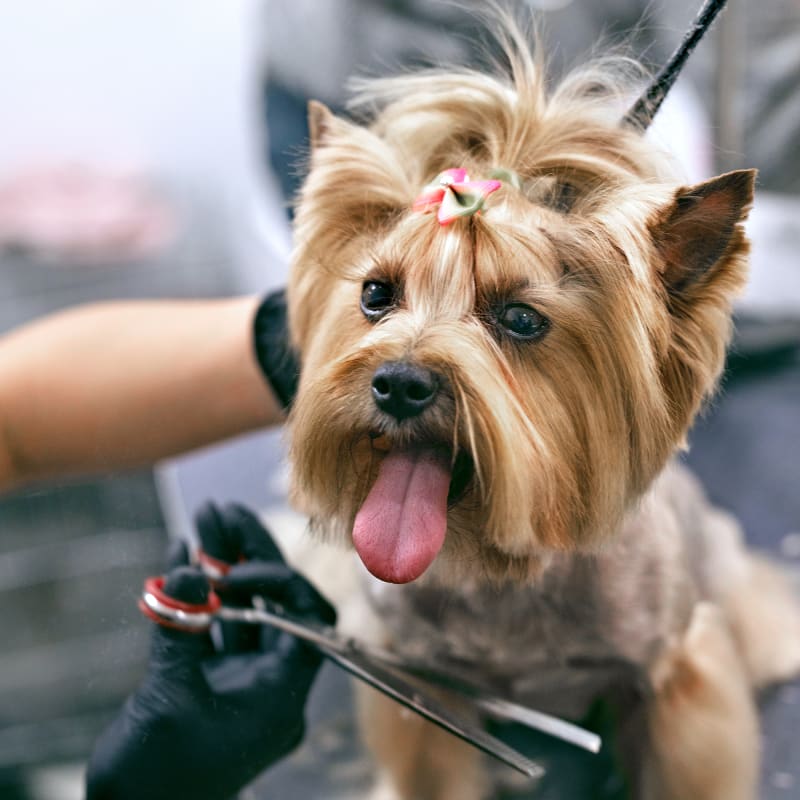
Understanding pet grooming and bathing
Grooming and bathing are crucial aspects of pet care. Not only do they ensure a clean pet but also contribute to their total health and well-being. With the myriad of grooming tools, techniques, and products available, it can be overwhelming for pet owners to navigate the world of pet grooming. Here's an in-depth look at understanding pet grooming and bathing to ensure your furry friend is always looking and feeling their best.
Why Grooming is Importanta. Health and Hygiene: Regular grooming helps remove dirt, dander, and dead hair, reducing the risk of skin infections.
b. Bonding Time: Grooming provides an opportunity to bond with your pet, building trust and strengthening your relationship.
c. Early Detection: Regular grooming sessions allow you to spot potential health issues, such as lumps, skin infections, or parasites.
d. Reduces Shedding: Grooming, especially brushing, can reduce the amount of loose fur and therefore the amount that's shed.
- Essential Grooming Tools
Explore a variety of grooming tools to find the ones best suited for your pet's coat type and grooming needs.
a. Brushes and Combs: There are several types of brushes, including slicker brushes, bristle brushes, and pin brushes. Your choice will depend on your pet's fur type.
b. Nail Clippers: Overgrown nails can be painful and harmful. Ensure you have a quality pair of nail clippers and know the right technique.
c. Ear Cleaner: Pets, especially those with floppy ears, can be prone to ear infections. Regular cleaning with the right solution can help.
d. Grooming Scissors: For pets with long hair, scissors can help trim and maintain a neat appearance.
- Bathing Your Pet
Bathing plays a significant role in a pet's grooming routine. While it's essential to keep them clean, it's also crucial not to overdo it.
a. How Often to Bathe: This largely depends on the breed and the pet's lifestyle. While some pets may require weekly baths, others might only need a bath every few months.
b. Choosing the Right Shampoo: With a plethora of options available, selecting the appropriate shampoo for your pet is vital. Consider factors like their skin type, any allergies, and the desired outcome (e.g., moisturizing, deodorizing).
c. Techniques: Ensure the water temperature is comfortable. Wet your pet thoroughly, apply the shampoo, and rinse thoroughly. Be extra cautious around the eyes and ears.
d. Drying: Towel dry your pet first, and if using a hairdryer, use it on a low setting and keep it a distance away to avoid burns.
- Professional Grooming
While many pet owners prefer DIY grooming, there are undeniable benefits to seeking a professional groomer.
a. Expertise: Professional groomers are trained to handle different breeds and coat types.
b. Comprehensive Services: They often offer services like anal gland expression, teeth cleaning, and specialized haircuts.
c. Safety: A professional will have the necessary equipment and knowledge to groom your pet safely, reducing the risk of injuries.
- Grooming Tips by Pet Type
a. Dogs: Depending on the breed, your dog might need daily brushing or just a monthly session. Be mindful of the breed-specific requirements.
b. Cats: While cats are generally good at grooming themselves, long-haired breeds like Persians can benefit from regular brushing.
c. Small Pets (like rabbits or guinea pigs): Regularly check their nails, teeth, and fur for any signs of issues. Brushing can help reduce shedding and hairballs.
Conclusion
Pet grooming is not just about maintaining aesthetics. It's a comprehensive approach to ensuring your pet's health, hygiene, and happiness. Whether you're exploring the vast world of grooming tools or searching for the perfect shampoo, always prioritize your pet's comfort and well-being. After all, a well-groomed pet is a happy pet!
This guide provides a comprehensive look into pet grooming and bathing. It offers insights, tips, and considerations for pet owners, ensuring that their furry friends always look and feel their best.
- Choosing a selection results in a full page refresh.












